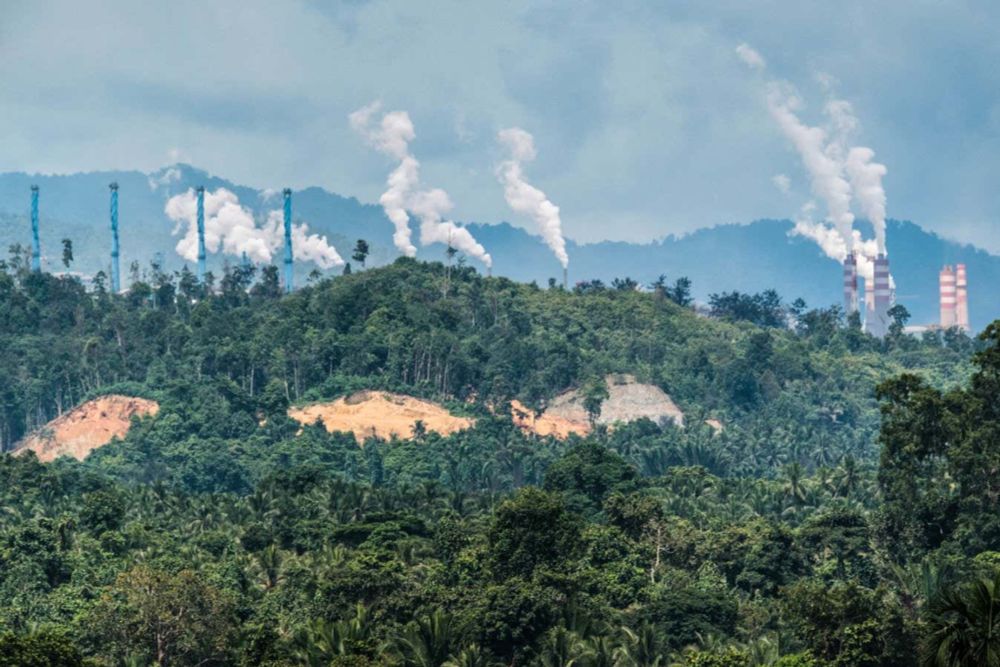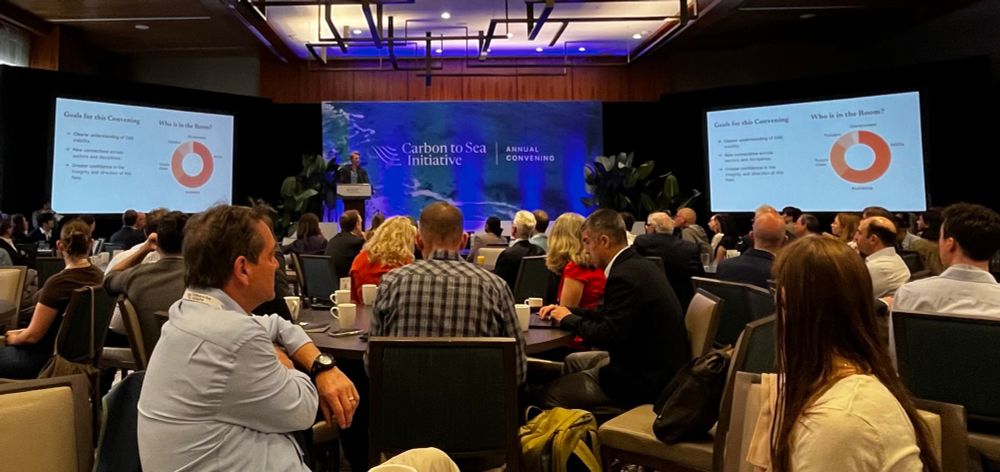Previously Oxfam
EA-fan
I often see the argument that the more emissions remain the more CDR is needed. Example below
But it's the opposite! If a lot of emissions remain it means there wasn't enough political will & capital to address them. That will & capital won't magically appear for CDR instead

I often see the argument that the more emissions remain the more CDR is needed. Example below
But it's the opposite! If a lot of emissions remain it means there wasn't enough political will & capital to address them. That will & capital won't magically appear for CDR instead
I often see the argument that the more emissions remain the more CDR is needed. Example below
But it's the opposite! If a lot of emissions remain it means there wasn't enough political will & capital to address them. That will & capital won't magically appear for CDR instead

I often see the argument that the more emissions remain the more CDR is needed. Example below
But it's the opposite! If a lot of emissions remain it means there wasn't enough political will & capital to address them. That will & capital won't magically appear for CDR instead
Or about ocean science 🌊!
Read the article about our paper: www.theguardian.com/environment/...

Or about ocean science 🌊!
Read the article about our paper: www.theguardian.com/environment/...
Biofuels, onboard CCS, and durable CDR are likely to be cheapest for the majority of emissions. But many roadmaps center around electrofuels, despite them looking like the most expensive alternative, as with aviation.

Biofuels, onboard CCS, and durable CDR are likely to be cheapest for the majority of emissions. But many roadmaps center around electrofuels, despite them looking like the most expensive alternative, as with aviation.
That's the proposed definition in this new paper. I agree, and have been arguing for a long time that there is NO need to create a special list of residual emissions... 1/5

That's the proposed definition in this new paper. I agree, and have been arguing for a long time that there is NO need to create a special list of residual emissions... 1/5


Full article: www.cdr.fyi/blog/zero-vs...

Full article: www.cdr.fyi/blog/zero-vs...
marginalcarbon.substack.com/p/what-needs...

marginalcarbon.substack.com/p/what-needs...
marginalcarbon.substack.com/p/what-needs...

marginalcarbon.substack.com/p/what-needs...
Here is a special moment from our last CDRscoop with @sebastianmanhart.bsky.social and @roberthoglund.bsky.social.
Enjoy!
Full 30-min live session:
www.linkedin.com/in/evetamme/...
Podcast version:
episodes.fm/1790305658
Here is a special moment from our last CDRscoop with @sebastianmanhart.bsky.social and @roberthoglund.bsky.social.
Enjoy!
Full 30-min live session:
www.linkedin.com/in/evetamme/...
Podcast version:
episodes.fm/1790305658
“As a result, shutdown of the Atlantic Meridional Overturning Circulation (AMOC) is likely within the next 20-30 years, unless actions are taken to reduce global warming – in contradiction to conclusions of IPCC."

“As a result, shutdown of the Atlantic Meridional Overturning Circulation (AMOC) is likely within the next 20-30 years, unless actions are taken to reduce global warming – in contradiction to conclusions of IPCC."
Lots to unpack.
@roberthoglund.bsky.social joins @sebastianmanhart.bsky.social and me for a punchy, insightful, and heated debate on this topic at the next CDR Policy Scoop.
Tune in on 5 Feb, 11.30 am CET:
www.linkedin.com/events/72919...
#CDRscoop

Lots to unpack.
@roberthoglund.bsky.social joins @sebastianmanhart.bsky.social and me for a punchy, insightful, and heated debate on this topic at the next CDR Policy Scoop.
Tune in on 5 Feb, 11.30 am CET:
www.linkedin.com/events/72919...
#CDRscoop
Somewhat concerning, the results show a significant gap between suppliers' and buyers' price expectations for almost all methods.
I have a lot more to say on this, but I'll save that for the blog post. Link: www.cdr.fyi/blog/cdr-pri...

Somewhat concerning, the results show a significant gap between suppliers' and buyers' price expectations for almost all methods.
I have a lot more to say on this, but I'll save that for the blog post. Link: www.cdr.fyi/blog/cdr-pri...
Somewhat concerning, the results show a significant gap between suppliers' and buyers' price expectations for almost all methods.
I have a lot more to say on this, but I'll save that for the blog post. Link: www.cdr.fyi/blog/cdr-pri...

Somewhat concerning, the results show a significant gap between suppliers' and buyers' price expectations for almost all methods.
I have a lot more to say on this, but I'll save that for the blog post. Link: www.cdr.fyi/blog/cdr-pri...
Salesforce has committed $5 million to pre-purchase durable carbon removal credits through Milkywire. This collaboration is part of Salesforce's ambitious $100 million CDR First Movers Coalition pledge.
www.milkywire.com/articles/mil...

Salesforce has committed $5 million to pre-purchase durable carbon removal credits through Milkywire. This collaboration is part of Salesforce's ambitious $100 million CDR First Movers Coalition pledge.
www.milkywire.com/articles/mil...
noisy-city-cf3.notion.site/AMOC-Researc...

noisy-city-cf3.notion.site/AMOC-Researc...
noisy-city-cf3.notion.site/AMOC-Researc...

noisy-city-cf3.notion.site/AMOC-Researc...

CDR.fyi durable CDR pricing survey, run in partnership with OPIS, closes today, December 6.
The survey is designed to shed light on pricing expectations for durable CDR
LINK: www.cdr.fyi/blog/durable...

CDR.fyi durable CDR pricing survey, run in partnership with OPIS, closes today, December 6.
The survey is designed to shed light on pricing expectations for durable CDR
LINK: www.cdr.fyi/blog/durable...
Carbon markets are just that — markets. Not climate solutions. #climatechaos
Their message to Net-Zero experts in every sector?
You're Doing It Wrong 🧪
www.bloomberg.com/news/article...

Carbon markets are just that — markets. Not climate solutions. #climatechaos
RMI put together a great explainer. See the image for scale.
Some highlights:
1 Gt CDR per year would require CAPEX spending of $32B-$1.1T. Huge range, mostly due to rock-based solutions being capex low (but higher opex).
Link: rmi.org/what-we-real... 1/4

RMI put together a great explainer. See the image for scale.
Some highlights:
1 Gt CDR per year would require CAPEX spending of $32B-$1.1T. Huge range, mostly due to rock-based solutions being capex low (but higher opex).
Link: rmi.org/what-we-real... 1/4
RMI put together a great explainer. See the image for scale.
Some highlights:
1 Gt CDR per year would require CAPEX spending of $32B-$1.1T. Huge range, mostly due to rock-based solutions being capex low (but higher opex).
Link: rmi.org/what-we-real... 1/4

RMI put together a great explainer. See the image for scale.
Some highlights:
1 Gt CDR per year would require CAPEX spending of $32B-$1.1T. Huge range, mostly due to rock-based solutions being capex low (but higher opex).
Link: rmi.org/what-we-real... 1/4
Several new studies and initiatives recently published
1/3
www.ciphernews.com/articles/red...

Several new studies and initiatives recently published
1/3
www.ciphernews.com/articles/red...
Several new studies and initiatives recently published
1/3
www.ciphernews.com/articles/red...

Several new studies and initiatives recently published
1/3
www.ciphernews.com/articles/red...

